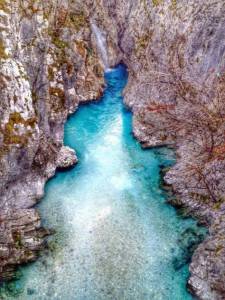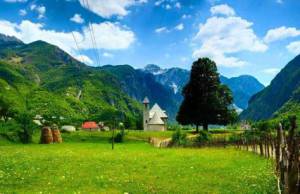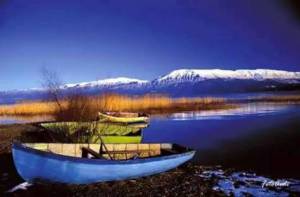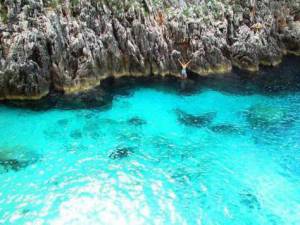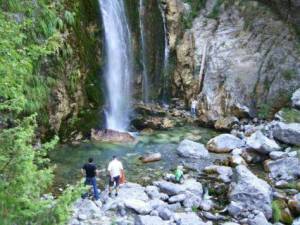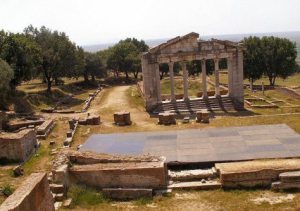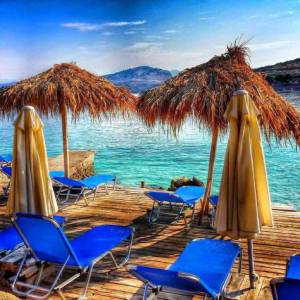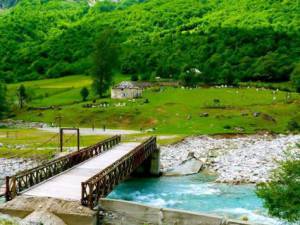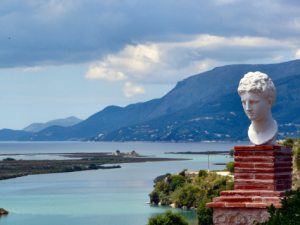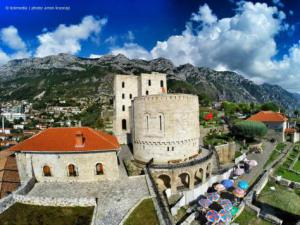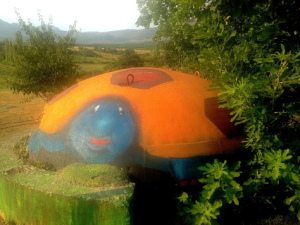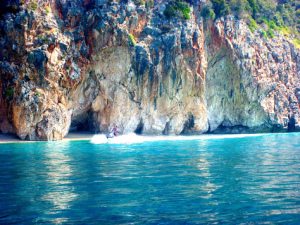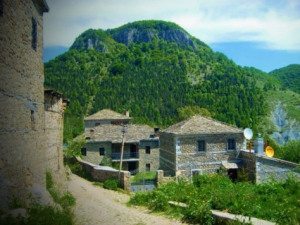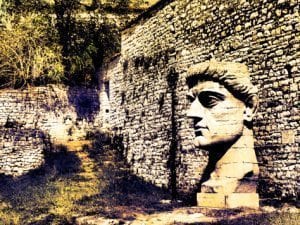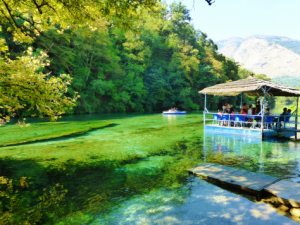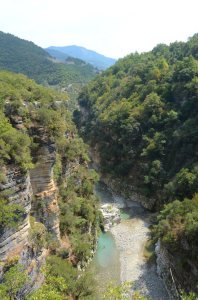The Blogger has been created to help you discover Albania, its culture, history, natural beauties, Archaeological sites, something that is difficult even to imagine. You might think you know Albania, because you may have heard about its fabulous places. Pictures do not provide you with the clear image of Albania, and therefore we offer you the opportunity to know Albania better, all the HISTORICAL arteries that spread throughout the country.
Search in This Blog
Translate
Monday, April 27, 2015
FROM MARSEILLE TO THE ALBANIAN RIVIERA, FIVE HOT EUROPEAN TRAVEL DESTINATIONS FOR SUMMER 2015

21 Apr 2015
Fancy getting footloose and fancy-free in Europe this summer?
We've picked out the five best places to pop on your radar, from the off-radar charm of the Albanian Riviera to the thriving port city of Marseilles - now reachable by Eurostar.
Grab your passport and get set for adventure; we're heading south...
MARSEILLE, FRANCE

Go for: Cote d'Azur glamour with a twist
The capital of Provence is eclectic and flamboyant, and thrives on its unruly, chaotic image.
For centuries, this ancient port city has welcomed in seafaring immigrants from all over the world. People of African, Arab, Muslim, Christian, and Jewish heritage have all found a home here under the Provençal sun, forming a rich cultural tapestry that never fails to captivate.
Marseille has begun tempting visitors back from its glamorous Cote d'Azur neighbours in recent years, thanks in part to a makeover brought about by its stint as 2013 European Capital of Culture - a move that prompted the creation of the new MuCEM, a dazzling glass-fronted museum that celebrates the area's dynamic Mediterranean history via art, dialogue and performance.
Add this to the fact that Eurostar is launching a new direct route between London and Marseille this spring - and the knowledge that the city has 300 days of sunshine a year - and there's every excuse to put this vibrant metropolis on the top of your to-go list.
Things to see and do
The heart and soul of Marseille life takes place in Vieux Port, and its here you'll feel the city's exuberant character most keenly. Amble down the majestic La Canebière boulevardleading to the sea, or head north to the pulsating hillside neighborhood of Le Panier, one of France's oldest urban districts, where the wondrous Museum of Mediterranean Archaeology beckons with its host of Egyptian treasures.
Soak in the atmosphere of the Marché aux Poissons, a vibrant little market where red mullet, bream, grouper and more arrive fresh off the boats every morning, or pop by Les Voûtes Marseille, a newly converted boutique shopping and restaurant area in the vaults of the city's Roman cathedral. And as far as beaches go, you'll be spoilt for choice.
Where to stay
For out-and-out luxury, get familiar with Le Petit Nice Passedat, a neo-Greek villa right on the seafront. Rooms are spacious and you'll eat like a king every night thanks to cuisine from French chef Gérald Passédat. A little cheaper but no less charming is Hotel 96, a 19th Century family-run bolthole just outside the city with a large, enticing swimming pool and orchard to its name.
Food and drink
Tucked away behind the Vieux Port and looking out onto the olive trees of Place Bargemon, Le Café des Épices is a tiny bistro with a big culinary imagination. The chalkboard menu changes daily, and covers everything from lamb sweetbreads with mint and pine-nuts to slow-roasted pork with butternut squash puree. For top notch seafood, nab a table at the Michelin-starred Une Table, au Sud, where Provençal delicacies such as bouillabaisse (traditional fish stew) and sea urchin terrine are cooked with passion and daring. Sample the best Côte d'Azur vineyards have to offer at trendy wine bar La Part des Anges.
Getting there
Eurostar will run trains from London to Marseille from 1 May, from £99 return.
PORTO, PORTUGAL

Best for: a romantic city escape
Everyone knows about the rustic charms of Lisbon, but the allure of Portugal's "second city" Porto moves one step closer this year as EasyJet expands its base here, with more flights from Luton, Bristol and Manchester.
A merchant town in the north of the country, Porto rises in a riot of colourful hillside buildings scattered above and around the Douro River.
The city has shrugged off its shabby reputation in recent decades, in a makeover that has brought new life to its crumbling town houses, streets and plazas. But it's still scruffy in a chic sort of way, and few could fail to be seduced by Cais da Ribeira (a Unesco World Heritage Site). This atmospheric medieval district stands on the riverfront of Porto and counts as one of Europe's oldest tourist destinations.
But the "new" side of the city is equally beguiling, with a burgeoning music scene led by the contemporary Casa da Música, an abundance of fine wines and a growing number of hip galleries, restaurants and retro shops.
Things to see and do
Take a ride on one of the city's vintage trams to explore its ancient neighbourhoods, or book yourself on sunset cruise up the river to watch the riverbank light up - as if by magic - come nightfall. The iconic Luís I. Bridge is your go-to spot for a true appreciation of Porto's panoramic skyline, in all its red-tiled, ethereal glory.
Gothic churches, baroque bell towers and ornate palaces are plentiful, but we also recommend popping by the "Lello & Irmão" bookshop, to ogle at the incredible Neo-Gothic interior that is said to have inspired JK Rowling's Harry Potter franchise. Wile away an afternoon or two at Rua de Miguel Bombarda, the downtown creative neighbourhood where all the cool kids hang out.
Where to stay
Rosa et Al is a boutique townhouse with six elegant veranda rooms and exquisite attention to detail; think wooden floors, warm lighting and claw-foot bath tubs. For something more dramatic, look to the surrounding Douro Valley region, where you'll find Quinta do Vallado, a winery hotel that combines 17th Century majesty with cutting-edge modern design (and naturally, you'll never have to look far for a drink here).
Food and drink
Solar Moinho de Vento is a traditional Portuguese haunt that's always packed with locals. Located in a 16th Century building, its specialties include generous helpings of rabbit stew and rice with ribs, turnips and chorizo. Restaurante O Gaveto is unassuming from the outside, but elated diners hail it as "the best authentic fish restaurant in Porto". Dishes change daily and include the likes of oven-roasted blackspot seabream and clams à la Bulhão Pato.
Getting there
EasyJet runs a series of cheap daily flights to Porto from destinations across the UK.
THE ALBANIAN RIVIERA

Best for: secluded beaches galore
For all the charm of the Mediterranean coast without the requisite crowds or prices, head to the Albanian Riveria.
Touted as "the last secret of Europe", tourists from Italy and the Balkans have been visiting this glorious 120-kilometre stretch of coastline in the southwest of the country for some years, but it's only just starting to be discovered by tourists from the rest of Europe.
The Riviera runs between Vlore and Sarandë, covering a vast and rugged landscape dotted with citrus and olive plantations, hidden lagoons and secluded beaches where the turquoise Ionian sea glitters invitingly.
Eating out here is a cheap and satisfying experience (a hearty restaurant meal will set you back the equivalent of around nine pounds) and the area is rapidly expanding its portfolio of self-catering options to lure visitors across the border from neighbouring Greece and Croatia. Get in now, before everyone jumps on the bandwagon.
Things to see and do
Must-see beaches for a tranquil spot of swimming and sunbathing include Ksamil (where you can swim to a nearby island), the crystal-clear waters of Dhermi, and Gjipea beach, where you can explore the wild and wonderful Gjipe canyon and the ruins of St Theodor’s Monastery.
It's not all about beach life, though; for hiking, picnicking and wildlife-spotting, head to Llogara National Park, a wooded alpine wilderness, accessed via a spectacular winding mountain road. And the region has plenty of famous sights to marvel at, from mysticalBlue Eye Spring to the ancient city of Butrint, a UNESCO World Heritage Site.
Where to stay
Hotel Brilant in Sarandë is a family-run hotel on the coast with large rooms, friendly staff and panoramic sea views from the upper floors. The TripAdvisor masses rave about the chic and luxurious Splendor Hotel & Spa on Dhermi beach, describing it as "unique", "charming" and "romantic". For a series of great self-catering options, check out this Albanian Riviera group.
Food and drink
Don't miss local raki - a potent aperitif made with plums and grapes - or if that's too strong for you, nothing beats a cold glass of Birra Korça, one of Albania's best-known beer brands, after a long day on the beach. Foodie specialties to watch out for include qifki (rice balls fried in herbs and egg) and Flija (a crepe-layer pie served with yoghurt, pickled vegetables, cheese and honey). We hear great things about Limani, a seafront pizza restaurant in Sarandë, and Kujtimi, a laid-back alfresco hangout serving mussels, fried trout and other locally sourced seafood treats, in the old town district of Gjirokastra.
Getting there
British Airways runs regular flights to the Albanian capital, Tirana, from where you can rent a car or catch a bus south. Another nice option is to take a ferry across from Brindisi in southern Italy - the picturesque journey takes just over seven hours.
MÁLAGA, SPAIN

Best for: a cultural quick-fix
Málaga has long been a gateway to the Costa del Costa, but it's now adding serious weight to its cultural kudos with the opening of the Pompidou Art Center Málaga this spring.
Dozens of 20th and 21st century artwork have been transported from the Paris Pompidou to its new pop-up sister, housed in a giant glass cube in the Andalusian port's waterfront "mile of art", and featuring pieces by Pablo Picasso, Frida Kahlo and Francis Bacon.
Also this spring, a collection of works from the Russian Museum in St. Petersburg has opened in a renovated former tobacco factory nearby, which - added to the Picasso Museum and the Centre for Contemporary Art - makes this harbour stretch of the city a veritable Aladdin's Cave of art, music and performance.
Foodie-wise, Málaga is increasingly making a name for itself too, with a number of new fine dining restaurants securing its reputation as a culinary hub in southern Spain. And let's not forget the clutch of upmarket boutiques, bars and gorgeous beaches that lie right on the city's doorstep.
Things to see and do
Find your bearings by taking a wander around the city's labyrinth of alleyways and palm-tree lined boulevards. As well as galleries, architectural hot spots abound, from the Gothic-renaissance splendour of La Manquita cathedral to La Alcazaba, the best-preserved Moorish fortress palace in Spain. The mountain-clad city of Granada is well worth a visit, is as the tropical paradise that is La Concepción Botanic Garden - one of the finest of its kind in Europe. The best beaches are a walk or bus ride away from the city centre.
Where to stay
The Vincci Seleccion Posada del Patio is very central and stylish, with a rooftop pool providing the icing on the cake. On the luxury end of things is Barceló La Bobadilla, a gorgeous Andalusian estate in the midst of olive groves and wild, mountainous countryside.
Food and drink
Restaurante Óle in the Centre for Contemporary Art is making waves for its curious - and brilliantly modern - Mediterranean-Japanese cuisine. Grab a pew on the buzzing open-air terrace and tuck into treats such as maki tempura with green asparagus, or suckling pig with mashed potatoes, apples and vanilla. Pop by Arte de Cozina in the province of Antequera for traditional Andalusian dishes such as spicy seafood paella and Ajo Blanco(chilled almond soup).
Getting there
Fly from London to Malaga from £84 return.
CAGLIARI, SARDINIA

Go for: a chilled island retreat
British Airways will this month opened up a new route from Heathrow to Cagliari, the lesser-known gem on Sardinia's breath-taking coastline.
This ancient port is nestled in the beautiful Bay of the Angels (Golfo degli Angeli), with eight miles of aquamarine beach, picturesque bays and surrounding wilderness to explore.
Don't miss the infamous pink flamingos that reside in the city ponds and the picturesque palazzi, domes and white limestone walls and towers of a place D.H. Lawrence once described as looking like "Jerusalem without trees".
Things to see and do
Begin with a wander around the medieval walled district of Casteddu de susu, the oldest and highest-positioned neighbourhood in Cagliari. Submerse yourself in the charm of the narrow cobble-stoned streets, an abundance of 13th Century ruins and contemporary art and sculpture at the National Art Gallery. Your next pit stop must surely belong to the Mercato Di San Benedetto, one of the largest covered markets in Italy. With 4,000 square metres of local produce, from fresh octopus to cheese, fruit and veg, it's a gourmand's utopia. And your inner explorer will revel in the spectacular Is Zuddas caves.
Where to stay
The Hotel Miramare is located moments away from the city harbour and is home to a small orchid greenhouse and an on-site spa offering Ayurvedic treatments. La Villa del Mare is a postcard-perfect translation of a chic beach hideaway, with a gorgeous series of apartments and suites peppered within palm trees and gardens overlooking Poetto beach.
Food and drink
Antico Caffè 1855 is a time-honoured Cagliari bistro that dates back to the 17th Century (as its name indicates). Overlooking the fortified bastion of Saint Remy Rampart, you'll find the finest pasties in town here, along with handmade ice-cream, crêpes and sumptuous cocktails. For a great atmosphere and creative Italian fare, look no further thanCorso Dodici, a modern centre-town restaurant with minimal decor and seafood-inspired cuisine, such as clam and porcini mushroom tagliatelli. For dessert, pop by Durke, a gorgeous sweet store with amaretti di sardegna biscuits and moist ricotta cheesecake.
Getting there
British Airways is running flights to Cagliari from 27 April, from £101 return. http://www.stylist.co.uk/travel/hot-european-travel-destinations-for-summer-2015-hotels-accommodation-europe-book-city-break-weekend
Sunday, April 26, 2015
Eco-turismo 2015, alla scoperta dell’entroterra albanese del sud
Trekking, visite a villaggi medioevali, moschee bektashi e viaggi gourmet: la cooperazione per sviluppo passa anche dal turismo

©EmanueleBompan la catena montuosa Trebeshinë – Dhëmbel - Nëmërckë
24/04/2015
E.B.
Nel silenzio si muove il fumo d’incenso, scosso dal frullare d’ali dei piccoli pipistrelli. Illuminate da flebili candele, sembrano muoversi le figure che, dense, ricoprono l’antica Chiesa di Santa Maria a Leusë, a pochi km da Përmet, Albania meridionale. Immersa in un piccolo villaggio, la chiesa è un gioiello di architettura ortodossa del XVIII sec., nascosta nel fogliame all’ingresso del paese. Sono tanti i paesini in pietra, con strade ancora sterrate o di ciottoli che punteggiano i pendii delle Alpi albanesi. Come Benjë-Novoselë, completamente diroccato, con la vecchia scuola di legno sospesa sulla valle e il maestro che ti invita a bere il thè di montagna (un mix di erbe alpine) con lui sotto gli alberi, mentre il sole tramonta dietro le vette. Ovunque ci s’imbatte nei sentieri abbandonati dai pastori transumanti per raggiungere gli alpeggi. Le chiese ortodosse albanesi si alternano alle tekke, curiose strutture dodecagonali, luogo di culto della chiesa islamica Bektashi, una corrente religiosa, che fonde elementi islamici sciiti e sunniti. Appoggiati su morbidi declivi o incassati tra i boschi, ognuno di questi villaggi costituisce un paesaggio unico.
Il turismo nella regione di Përmet è ancora poco sviluppato. Vuoi perché le infrastrutture scarseggiano, vuoi perché certe aree remote hanno il pregio di rimanere tesori nascosti. «Il potenziale per un turismo eco-sostenibile, centrato sulle comunità locali e sui loro prodotti è buono», racconta Giorgio Ponti di CESVI, che ha da poco ha inaugurato il Centro Multifunzionale e l’Ufficio di Informazione Turistica di Përmet. «Il progetto fa parte della visione di sviluppo territoriale che la nostra Ong ha impostato qui come motore di crescita. Tanta gente lascia il villaggio per cercare fortuna altrove anche in Italia. Con questi progetti possiamo fornire un’opportunità ai più giovani». I commenti raccolti sono positivi. «Vediamo che ci sta aiutando a posizionarci su guide e articoli di viaggio», commenta l’oste del ristorante Familjiari, uno dei migliori di Përmet.
«Questa zona è ottima per chi vuole sostare un giorno, mentre è di passaggio, oppure per chi vuole spendere qualche giorno a fare eco-trekking in una zona remota, con montagne affascinanti in un ambiente incontaminato», spiega Ponti. «Le camminate possono durare anche vari giorni sulle montagne del Parco Nazionale di Bredhi i Hotovës». Per i più si organizzano percorsi di rafting nelle gole mozzafiato del canyon Lengarica, lungo quasi sei chilometri, in alcuni punti alto più di mille metri, e talmente stretto che ci passa a malapena il gommone.
Chi cerca il relax può immergersi nelle sorgenti termali presso il villaggio Benje, note come “Banjat e Benjes”. Distano solo dieci minuti di auto da Përmet, e a parte i mesi estivi, sono spesso poco frequentate. Da Banjat e Benjes emergono sei principali fonti, disposte su entrambi i lati del fiume Langaricë. Ognuna si dice abbia un effetto curativo specifico, determinata dalla composizione chimica dell’acqua e dalle temperature. C’è la fonte per malattie reumatiche croniche, una per ripristinare lo stomaco e una sorgente di acqua per la cura della pelle. In realtà in tanti ci vanno solo per fare un tuffo. O per pranzare da Mali i Bardhë, un ottimo ristorantino specializzato in carne grigliata.
La zona offre anche spunti interessanti per visite nei dintorni: dalla gita al confine con la Grecia a Tre Urat, dove gli italiani combatterono nel 1940, all’interessante Gjirokastër, o Argirocastro come è meglio nota in Italia. Il suo nome significa Fortezza Argentata, e racchiude tra le sue mura cultura romana, turca e albanese. Il simbolo della città è, come dice il nome stesso, l’imponente fortezza, una delle mete turistiche più popolari di tutta l’Albania, e patrimonio Unesco come l’intera città vecchia. Per rivivere la follia della dittatura di Hoxha si può visitare l’intricato bunker sotterraneo antiatomico costruito per la nomenclatura locale. Stanze, cunicoli spogli, passaggi segreti, s’inerpicano sotto la montagna: una visita per ripercorrere l’epoca della guerra fredda.
«L’offerta turistica della zona non può che dirsi completa», ci dice Ponti mentre usciamo dai tunnel umidi e freddi del bunker. Dal trekking alla visita culturale, questa zona, che sta migliorando la sua offerta turistica grazie anche ai progetti di formazione che offriamo a Përmet, può diventare un punto certo sulla mappa del turismo albanese». Non resta che brindare al suo futuro con un bicchiere di grappa fruttata, l’iconica raki. http://www.lastampa.it/2015/04/24/scienza/ambiente/speciali/fondi-cooperazione-sviluppo/2015/reportage-albania/ecoturismo-alla-scoperta-dellentroterra-albanese-del-sud-Ghzrft3evw8H8gLT9jL62N/pagina.html
Saturday, April 25, 2015
20 places that will change your mind about Albania
- April 20th, 2015
- Tourism

Written by Armela Bega
Colorful landscapes, lakes, high mountains, rivers and valleys. Natural beauties that blend in cultural and historical heritage, inherited from our forefathers. All blended in the hospitable Albanian traditions that will follow you through your journey in Albania. So guys are you ready?
- You didn’t know there are so many canyons and waterfalls? Well, I have good news, there actually are and I wouldn’t miss this one, Valbona National Park.
Photo credits: My Albania “Nature Explorers” – Valbona River, North Albania
2. How about beaches – not bitches… Just head south and the crystal clear Ionian waters of Gjiri i Granës will certainly not disappoint you.
Photo credits: Arton Krasniqi – Gjiri i Granës, Dhërmi, – South Albania
3. Welcome to Thethi! The gate to the Albanian Alps, waterfalls and canyons. Simply, an amazing place for explorers and nature lovers to visit.
Photo credits: My Albania “Nature Explorers” – Kullat e Thethit, North Albania
4. Is hiking too much for you? You’re in the right place. There’s a touch of melancholia every time I spend a night or two in the vicinity of Ohrid lake. Inspired from the changing moods of these waters was the Albanian poet Lasgush Poradeci. He observed the mountains casting their shadows over the depths of its sparkling waters and blended those landscapes in his poetry.
Photo credits: My Albania “Nature Explorers” – Ohrid Lake, Pogradec, South East Albania
5. The surrounding sea waters form the only marine park in Albania – Karaburun-Sazan National Marine Park.
Photo credits: Nëntor Oseku, Gjiri i Bristanit, Karaburun Peninsula
6. Another unique gem in Theth – Ujvara e Grunasit. So rare that it is considered a natural monument.
Photo credits: My Albania “Nature Explorers” – Ujvara e Grunasit, Theth – Grunas Waterfall, North Albania
7. Time for history. Apolonia, the ruins of an ancient Illyrian city. It was founded in 588 BCE by Greek colonists from Corfu and Corinth, on a site initially occupied by Illyrian tribes.
Photo credits: My Albania “Nature Explorers” – Apollonia, Fier
8. Ksamil Beach – A hideaway for many local and foreign tourists.
Photo credits: My Albania “Nature Explorers” – Ksamil Beach, South Albania
9. And many other valleys…
Photo credits: My Albania “Nature Explorers” – Lugina e Valbonës, North Albania
10. Dea – the Godness of Butrint, was discovered from the Italian archeologist Ugolini in1928. The Guardian recently listed the national park of Butrint as part of the top 10 national parks in Europe.
Photo credits: Robert Hagen – Dea of Butrint
11. Kruja, the first capital of today’s Albania in the Middle Ages. It’s identified with our national hero, Skanderbeg.
Photo credits: Arton Krasniqi – Kruja, Albania
12. Mrizi i Zanave – Well known for its culinary delights and agritourism in the northern Albania. A lovely place to visit.
Photo credits: Armela Bega – Mrizi i Zanave, Fishtë
13. More cliffs and rocky seaside…
Photo credits: Armela Bega – Caves, South Albania
14. Too sunny and need some fresh air? Take the water motor bikes and head towards the Pirates’ cave. Afterwards, a stop at some of those hidden beaches is not a bad idea.
Photo credits: Armela Bega – Pirates’ Cave, South Albania
15. Ok, let’s put it this way: If I was to retire today and I had to live somewhere in Albania, I would happily live in Dardha.
Photo credits: Armela Bega – Shpella e piratëve – Pirates’ Cave, South Albania
16. Back to the 15th century there were no smartphones. During Skanderbeg’s fight against the Ottomans, the Petrela Castle, which was under control of Skanderbeg’s sister Mamica, signaled to Kruja Castle the coming of Ottoman troops using means of fire. Nowadays, it’s a pleasant bar/restaurant near Tirana.
Photo credits: Armela Bega – Kalaja e Petrelës – Petrela Fortress, Petrelë, Albania
17. Berat is known as the city of two thousand steps or thousand windows, a castle on top, medieval museum and a beautiful river. Worth visiting this UNESCO World Heritage site.
Photo credits: Sarah Tzinieris – Berat, Albania
18. The Blue Eye is one of the most natural phenomena in Albania. Crystal clear water bubbling in the surface from more than 50 meter deep karst hole (literally looks like a blue eye) and it’s surrounded by shades of green water. Here is a great video.
Photo credits: Sarah Tzinieris – Syri i Kaltër, Sarandë, South Albania
19. I can tell you that canoeing through Osumi River Canyon was a sensational experience. This spectacular landscape resembles a miniature Grand Canyon.
Photo credits: Fadion Dashi – Osumi Canyons, Skrapar
20. Last, but definitely not least: This stop is the ultimate spot for your next Facebook poser shot. What a divine view and a deep sense of freedom! This daring traveller took the chance cruising through the steep and curvy Pass of Llogara…
Subscribe to:
Posts (Atom)

